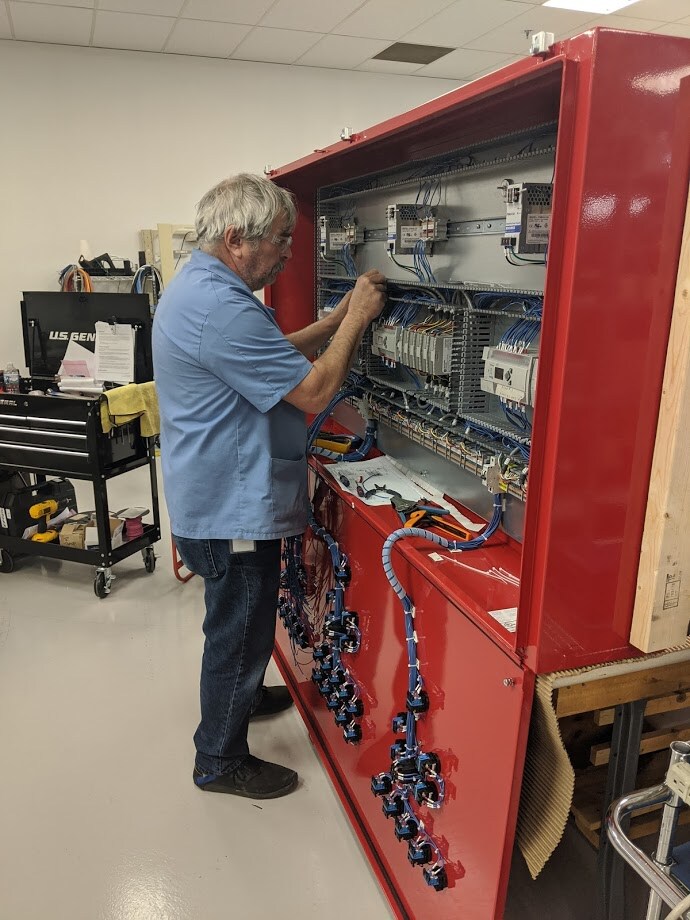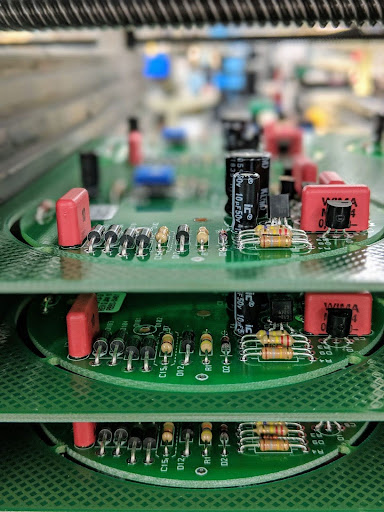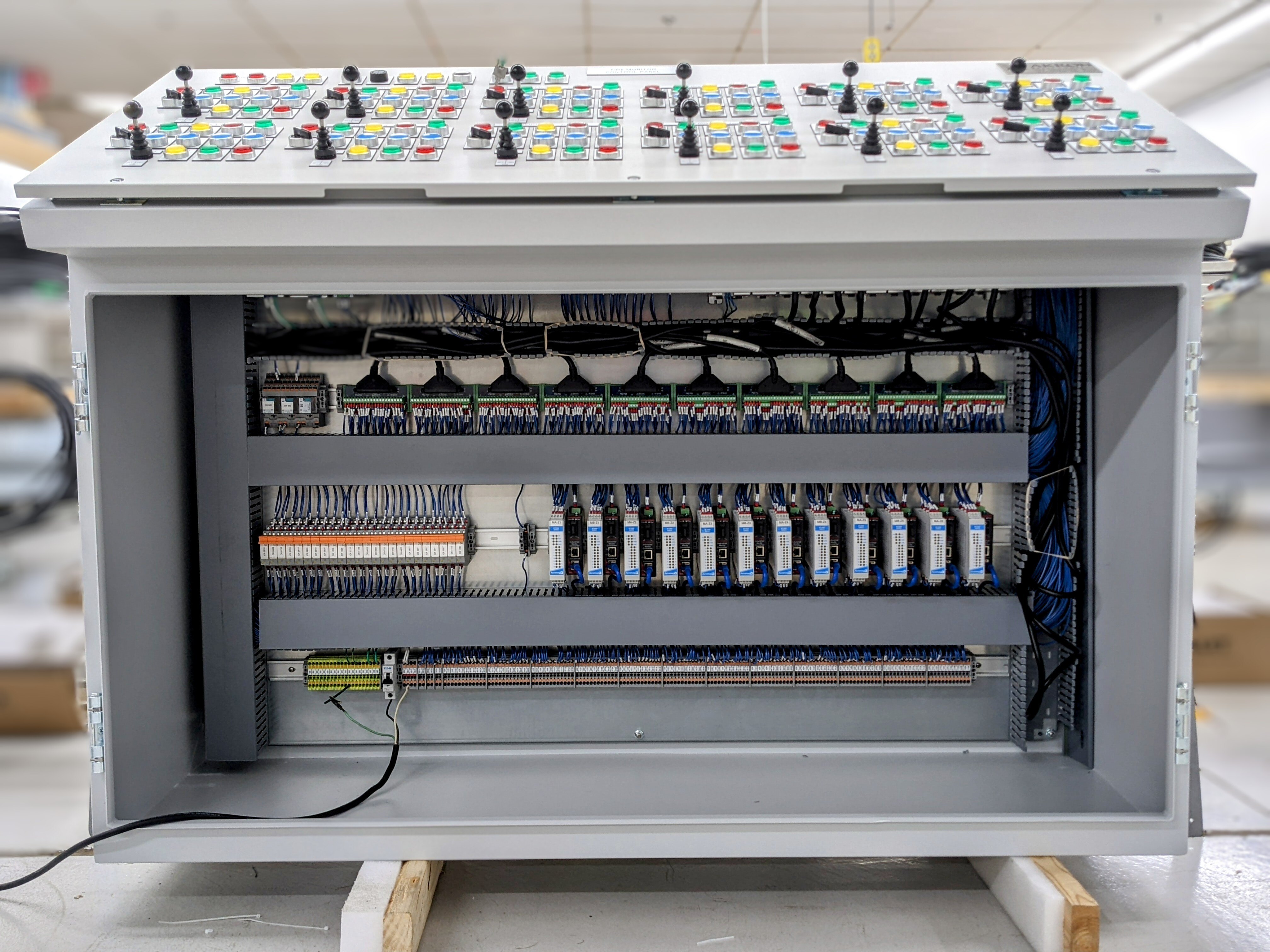The RBB Sales team is here to help you with your projects. Recently, we've added a new face to the team, allowing us to serve you better.
Please welcome Emily Norris as RBB’s Sales Administrator. Emily started with RBB in May. She is now ready to help you with your daily ordering, quoting, and questions. You can reach Emily at enorris@rbbsystems.com.
Finding the right PCB company
Finding the right PCB company, especially if you’re looking for PCB companies in your area, might seem like a monumental task. With all different factors to consider, from proximity to quality assurance to actual production capacity and capability, finding the right PCB supplier.
Whether you’re looking for a new partner in custom PCB manufacturing that can accommodate your unique challenges, or you’re just trying to find a PCB company in your area, consider partnering with RBB.
U.S. Circuit Board Manufacturer
RBB is proud to be one of the best US circuit board manufacturers around, and as a company that regularly invests in our local community, we know the benefits of working with a domestic business for any needs–especially manufacturing. In today’s era of uncertainty and changing global supply chains, here’s why working with a domestic manufacturer is so important.
Scientific Advancements
Custom circuit board manufacturing is going through a big transformation propelled by scientific advancements and changing industry needs. The methods and materials used in circuit boards are becoming more complex as technology progress. This blog explores what lays ahead in industry trends, focusing on scientific developments and what they mean.
RBB is always working to be better and stay on top of what is happening with our industry, and this is what we see ahead.
Medical Electronics
The field of medical electronics is going through a big transformation thanks to advancements in printed circuit board (PCB) technologies. These developments can create smaller, more efficient, and highly functional medical devices that are reshaping healthcare delivery. From wearable health monitors to implantable devices and diagnostic equipment, PCBs are at the heart of these breakthroughs. Let’s explore how technologies like flexible and rigid-flex PCBs, high-density interconnects (HDI), and embedded components are changing medical electronics.
Simplify the box-build process
Box build assembly projects can be hard to manage, especially when they have complicated designs, multiple suppliers, subcontractors and internal teams. Whether you are creating control panels, complex machinery, or electronic devices, you need efficient project management to bring your products to market on time and within budget.
We know what it takes to manage box-build assembly projects at RBB. We offer a comprehensive set of electronic assembly services, including full box builds, custom control panels, and wiring harnesses, all leveraging industry-leading practices to make even the most complex tasks simple.
RBB Systems experts in High-Mix, Low Volume
In the Electronics Manufacturing Services (EMS) industry, the term high-mix, low-volume (HMLV) refers to contract manufacturers (CMs) or original equipment manufacturers (OEMs) that frequently switch production between assemblies and processes. This contrasts sharply with low-mix, high-volume (LMHV) operations, where production runs can last weeks or even months between changeovers. HMLV shops are known for their agility, rapidly converting production lines to different assemblies—sometimes in a matter of hours or minutes—and doing so frequently, often several times a week or even within a single shift. LMHV, on the other hand, is a completely different beast, focusing on long, uninterrupted production runs..
Both business models are well-established in the industry, each serving its own purpose. However, for growing clients who face unpredictable demand and require a fast, flexible provider for their printed circuit board assemblies (PCBAs) and control panels, a third alternative has emerged: RBB.
RBB Systems' Expertise in Custom Integration
Box-build assemblies and industrial control panels are key to delivering integrated, ready-to-use solutions. These systems often have greater complexity than standard PCB assemblies because they involve not just the board but also enclosures, wiring, cable harnesses, mechanical integration, and final testing. Meeting specific customer needs with box-build solutions requires a high degree of flexibility and customization. However, it’s essential to understand the limitations of this process, particularly in regard to the influence a company like RBB has on design, component selection, and assembly.
At RBB, we don’t design or build panels or box builds ourselves; rather, we build to our customers' specifications. Most of the time, our customers provide all or most of the parts required for the assembly. We can suggest substitutions to the bill of materials (BOM), but we will not make changes to the build without customer approval.
In this blog, we’ll discuss why Box-build assemblies and industrial control panels are key to delivering integrated, ready-to-use solutions With solutions, benefits, and RBB's core value of "Always Better" and our unwavering commitment to providing maximum customer benefits. At RBB, we constantly assess our manufacturing processes and seek ways to enhance each task's efficiency.
Driving Innovation in Manufacturing:
Electronic assembly is a critical process when manufacturing modern devices. Inventive assembly technologies are needed as demand for smaller, faster, and more efficient electronics continues to grow. In recent years, the manufacturing process has been changed by advancements in electronic assembly technologies such as surface mount technology (SMT), automated assembly, and advanced soldering techniques.
Production speeds, precision, and the ability to integrate smaller, more complex electronic devices have been increased by these technologies to meet the changing needs of many industries.
In this blog, we’ll explore some of the top practices from leading assembly manufacturers and highlight real-world examples of success stories that can inspire others in the industry. With solutions, benefits, and RBB's core value of "Always Better" and our unwavering commitment to providing maximum customer benefits. At RBB, we constantly assess our manufacturing processes and seek ways to enhance each task's efficiency.















